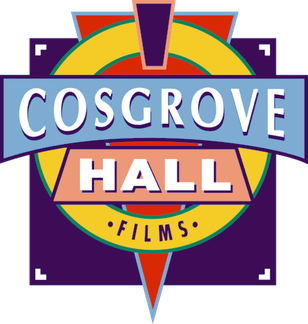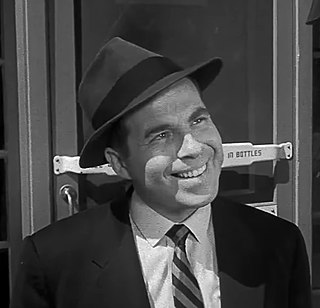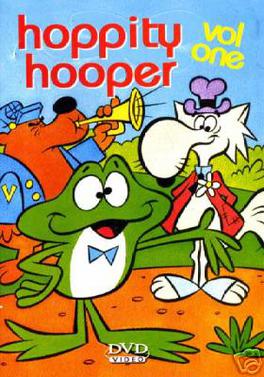
Mickey Mouse Works is an American animated television series produced by Walt Disney Television Animation featuring Mickey Mouse and his friends in a series of animated shorts. The first Disney television animated series to be produced in widescreen high definition, it is formatted as a variety show, with skits starring Mickey Mouse, Minnie Mouse, Donald Duck, Daisy Duck, Goofy, Pluto and Ludwig Von Drake while Horace Horsecollar, Clarabelle Cow, Morty and Ferdie Fieldmouse, Huey, Dewey and Louie, Chip 'n' Dale, Scrooge McDuck, Pete, Humphrey the Bear, J. Audubon Woodlore, Dinah the Dachshund, Butch the Bulldog, Mortimer Mouse, José Carioca, and Clara Cluck appear as supporting or minor characters. Musical themes for each character were composed by Stephen James Taylor with a live 12-piece band and extensive use of the fretless guitar to which the music of the series was nominated for an Annie Award in both 1999 and 2001. Most of the shorts from the series were later used in House of Mouse.
Animation in the United States in the television era was a period in the history of American animation that gradually started in the late 1950s with the decline of theatrical animated shorts and popularization of television animation, reached its peak during the 1970s, and ended around the late 1980s. This era is characterized by low budgets, limited animation, an emphasis on television over the theater, and the general perception of cartoons being primarily for children.

The Snowman is a 1982 British animated television film and symphonic poem based on Raymond Briggs's 1978 picture book The Snowman. It was directed by Dianne Jackson for Channel 4. It was first shown on 26 December 1982, and was an immediate success. It was nominated for Best Animated Short Film at the 55th Academy Awards and won a BAFTA TV Award.
The history of animation, the method for creating moving pictures from still images, has an early history and a modern history that began with the advent of celluloid film in 1888. Between 1895 and 1920, during the rise of the cinematic industry, several different animation techniques were developed or re-invented, including stop-motion with objects, puppets, clay or cutouts, and drawn or painted animation. Hand-drawn animation, which mostly consisted of a succession of still images painted on cels, was the dominant technique of the 20th century and became known as traditional animation.

Cosgrove Hall Films was a British animation studio founded by Brian Cosgrove and Mark Hall, headquartered in Chorlton-cum-Hardy, Manchester. Cosgrove Hall was a major producer of children's television and animated programmes/films, which are still seen in over eighty countries. The company was wound down by its then owner, ITV plc, on 26 October 2009. It was mainly known for its series Danger Mouse, The Wind in the Willows and Count Duckula.

Solomon Hersh Frees, better known as Paul Frees, was an American actor, comedian, impressionist, and vaudevillian. He is known for his work on Metro-Goldwyn-Mayer, Walter Lantz, Rankin/Bass and Walt Disney theatrical cartoons during the Golden Age of Animation, and for providing the voice of Boris Badenov in The Rocky and Bullwinkle Show. Frees was known as "The Man of a Thousand Voices", though the appellation was more commonly bestowed on Mel Blanc.

Hoppity Hooper is an American animated television series produced by Jay Ward, and sponsored by General Mills, originally broadcast on ABC from September 12, 1964, until 1967. The series was produced in Hollywood by Jay Ward and Bill Scott, with animation done in Mexico City by Gamma Productions.

The Ruff and Reddy Show is an American animated television series produced by H-B Enterprises for NBC. It is one of the earliest Saturday-morning cartoons, and the first series made by Hanna-Barbera. The series follows the adventures of Ruff and Reddy. It was presented by Screen Gems, the television arm of Columbia Pictures. It premiered in December 1957 and ran for 156 episodes until April 1960, comprising three seasons total. It was repeated on NBC Saturday mornings from 1962 to 1963. In the late 1950s, it was sponsored by Post Consumer Brands.
Crystal Tipps and Alistair is a British cartoon produced for the BBC that aired between 28 February 1972 and 1974 on BBC One.

The Sylvester & Tweety Mysteries is an American animated television series produced by Warner Bros. Television Animation which aired from September 9, 1995 to February 5, 2000 on Kids' WB. The final episode, containing the segments "The Tail End?" and "This Is the End", was never shown on Kids' WB, not premiering until December 18, 2002, when the show aired in reruns on Cartoon Network. 52 episodes were produced.

The Pink Panther is a fictional animated character who appears in the opening or closing credit sequences of every film in The Pink Panther series except for A Shot in the Dark and Inspector Clouseau. In the storyline of the original film, the "Pink Panther" is the name of a valuable pink diamond named for a flaw that shows a "figure of a springing panther" when held up to the light in a certain way; in the credits this was translated to an animated pink panther. Only the first Pink Panther film and its third sequel, The Return of the Pink Panther, featured the diamond.

The New Adventures of Superman is a series of six-minute animated Superman adventures produced by Filmation that were broadcast Saturday mornings on CBS from September 10, 1966, to September 5, 1970. The 68 segments appeared as part of three different programs during that time, packaged with similar shorts featuring The Adventures of Superboy and other DC Comics superheroes.

The Adventures of Superboy is a series of six-minute animated Superboy cartoons produced by Filmation that were broadcast on CBS between 1966 and 1969. The 34 segments appeared as part of three different programs during that time, packaged with similar shorts featuring The New Adventures of Superman and other DC Comics superheroes.
The Night Before Christmas is a 1941 American one-reel animated cartoon and is the third Tom and Jerry short directed by William Hanna and Joseph Barbera, produced by Fred Quimby and animated by Jack Zander, George Gordon, Irven Spence and Bill Littlejohn. It was nominated for the 1941 Academy Award for Best Short Subject: Cartoons, but lost to the Mickey Mouse short film Lend a Paw, making it the only Tom and Jerry cartoon to lose to a Disney film.
Oscar's Orchestra is an animated series that ran from 1995 to 1996 comprising a total of three series and 39 episodes as a BBC competitor to ITV's Budgie the Little Helicopter. The series was produced by the popular British animation studio Tony Collingwood Productions Limited in association with Warner Music Vision and Europe Images, and was originally shown on the BBC as part of their children's block CBBC. It also aired on the British children's cable networks The Children's Channel (TCC) and Nickelodeon and has broadcast in over more than 100 different countries worldwide such as ARD in Germany, France 3 in France, ABC in Australia and syndication in the United States.
Music Land is a Silly Symphony animated Disney short released in 1935.

The Smurfs is an animated fantasy-comedy children's television series that originally aired on NBC from 12 September 1981 to 2 December 1989. Produced by Hanna-Barbera Productions, it is based on the Belgian comic series of the same name, created by Belgian cartoonist Peyo and aired for 256 episodes with a total of 419 stories, excluding three cliffhangers episodes and seven specials episodes.
Events in 1958 in animation.

Telecomics is the name of two American children's television shows broadcast from 1949 to 1951. Along with Crusader Rabbit and Jim and Judy in Teleland, the Telecomics broadcasts were some of the earliest cartoon shows on television, although they were essentially a representation of comic strips on screen, with a narrator and voice actors talking over still frames, with only occasional moments of limited animation.
Events in 1919 in animation.












